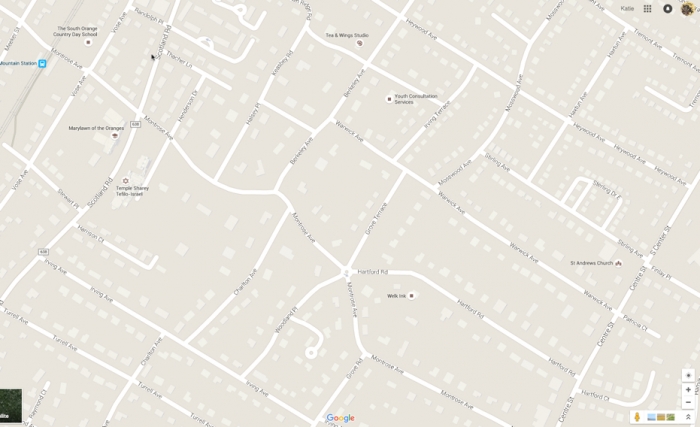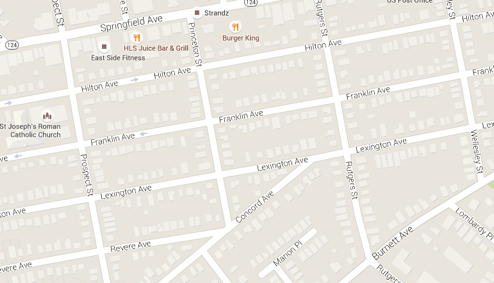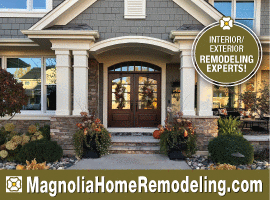Accessory dwelling units: Time to start allowing them in M/SO?
only if you can provide off street parking for 2 cars per unit, please.
Why off-street parking for 2 cars per unit? IMO off street for 1 car per unit, if that, would seem to make more sense.
well it assumes that the first line of the op is true... that nobody wants more apartments.
I think most people are ok with more apartments in downtowns and near train stations.
And people have been fighting subdivisions for years - even on very large lots so I would guess many if not most people would object to small houses being built in backyards.
not to mention that most back yards in maplewood are far too small to build anything in.
I'd be happy to let someone build in my backyard, if they don't mind their house sliding into the river within 2 months.
Dennis_Seelbach said:
not to mention that most back yards in maplewood are far too small to build anything in.
This. I'm trying to figure who has a yard big enough to build one of these without violating setbacks.
PeggyC said:
Dennis_Seelbach said:
not to mention that most back yards in maplewood are far too small to build anything in.
This. I'm trying to figure who has a yard big enough to build one of these without violating setbacks.
I would guess that there are some homes with yards sufficiently large enough for this type of structure, but NIMYism in those neighborhoods would be quite vocal.
I think there are quite a few houses in South Orange with yards that are big enough. Often they can go on top of an existing garage.
Also, ADUs aren't necessarily separate buildings. Often they are carved out of the existing house. We have no shortage of houses that are way too big for modern small families with no servants.
mikescott said:
well it assumes that the first line of the op is true... that nobody wants more apartments.
There was significant opposition to the Post House. The specific objections kept changing, so I'm not sure how much of it was opposition to apartments. How many people here would like to see more multi-story apartment buildings built in or around downtown Maplewood?
I also think South Orange is getting uncomfortable with the number of apartments built in recent years. I don't see a lot of interest in additional buildings.
ADUs increase density in in-demand areas and allow seniors to stay in their home by adding an income-generating unit. If they can work in San Francisco, why can't they work here?
ctrzaska said:
And NIMBY.
Yeah.
I think that answers your question.
While my house assuredly isn't "way too big for modern families with no servants", it's a bit presumptuous to state that a large house is "way too big", isn't it? Isn't that only up to the people who live there to decide?
I live on Academy Street. I have a driveway, which is good because several neighbors have multi family homes and little or no off street parking. As a result, there are always cars in front of my house, one of which seldom moves. The street cleaners can never clean my side of the street, and so the storm drains clog. It seems like every couple has to have two cars, so if you want to carve out apartments go ahead, but please have parking.
I think something like this would be very difficult to regulate, even though there are plenty of homes in SO that have lots of room to spare. I've been in a few homes where it would be easy enough to accommodate an in law suite, or adult children, as pairs or other multigenerational set ups, but on a whole I would probably not want more than these scenarios in my own neighborhood.
ctrzaska said:
I think that answers your question.
While my house assuredly isn't "way too big for modern families with no servants", it's a bit presumptuous to state that a large house is "way too big", isn't it? Isn't that only up to the people who live there to decide?
Yes, of course. No one is forcing anyone to build ADUs. But if a person owns a big house and wants to build an ADU, in conformance with building code, why shouldn't they have the option?
Well, that's not what you said... you said there's "no shortage of houses that are way too big". The point I was making is that "way too big" isn't for you to say.
But to answer your question, I'm not sure why anyone would buy into a big house with room that they apparently don't need, then ADD ON to create more room, just to pay for the room in the big house they apparently don't need. Alternatively, if one is living in a big house with room that they apparently don't need, one likely might (I'd logically assume) seriously consider downsizing before spending a pile of money or draining equity to build an ADU, which they'd then have to recoup costs on before ever seeing a profit stream, only to support continued living in a big house with room they apparently don't need. Am I missing something?
ETA: So no, I'm not sure they should have the option given the appropriate space would severely restrict the number of people who could take advantage of it, open up a host of issues with neighbors and challenges, and all for a segment of the population I find would be exceedingly small. Not worth it.
ctrzaska said:
But to answer your question, I'm not sure why anyone would buy into a big house with room that they apparently don't need, then ADD ON to create more room, just to pay for the room in the big house they apparently don't need. Alternatively, if one is living in a big house with room that they apparently don't need, one likely might (I'd logically assume) seriously consider downsizing before spending a pile of money or draining equity to build an ADU, which they'd then have to recoup costs on before ever seeing a profit stream, only to support continued living in a big house with room they apparently don't need. Am I missing something?
How many threads have I seen on MOL about helping seniors deal with their tax burden so they can stay in their homes? Building an ADU seems like a good answer. Many of these seniors have paid off their mortgages and can pull equity out of the house. It doesn't seem all that challenging or expensive to turn a couple bedrooms in a 6-bedroom house into an apartment. Say you spent $50,000 building the ADU. A nice one-bedroom apartment would rent for $1,500/month, which would pay back the investment in three years and then provide a useful income stream.
PeggyC said:
Dennis_Seelbach said:
not to mention that most back yards in maplewood are far too small to build anything in.
This. I'm trying to figure who has a yard big enough to build one of these without violating setbacks.
Montrose, for starters.
In contrast, the other side of Springfield. Yes, there probably isn't enough space for ADUs in some areas.
Sorry, but someone living in a 6BR, 7-figure house on 3/4 of an acre on Forest, with a tax bill of $50k/yr, isn't putting a 1BR addition up to help with their bills. They're just not. And in the rare chance their current house reflects a wildly different picture than their liquid asset situation, and they did want to try (as fiscally silly as it would be), their neighbors may not let them do it without a costly fight. These aren't the seniors clinging to their homes that the MOL threads were talking about.
the elephant in the living in this discussion is the elimination of all the present illegal housing already in both towns. Multiple unrelated folks sharing a home. That is a discussion for serious concern regarding police and fire safety, as when heating, electric and plumbing construction codes are not followed.
Before the town could legitimize new housing units to be built attached to or in the rear of existing properties, some control, possibly grandfathering of some existing add-ones would have to take place.
There's a neighborhood in St Petersburg Florida, near the downtown called the Old North East. It feels a lot like Maplewood/South Orange "south". Tree lined streets with charming 1920s era houses. There are alleys that run between the back of the houses and the garages all face the alleys. Some of the garages have been converted to legal ( and not legal) rental apartments, or have had rental apartments built above. Of course the value of the properties with rental apartments is higher because of the income potential.
BUT - the value of the surrounding properties is less. Properties on streets with less "rental" is significantly more than the value of properties that are adjacent to "rental".
So if the same holds true in other places ( and I believe it would). If the suggestion in the OP were taken, and people were allowed to build these auxiliary units in their back yards they would be increasing the value of their properties, but taking away value from their neighbors. Why should that be allowed, unless of course, the neighbors approved and were adequately compensated.
So you are suggesting the folks who can't afford the taxes on their big houses should use equity in the house, not to pay said taxes, but rather so they can become landlords and deal with those headaches? I don't get that argument at all.
Also, older Maplewood and South Orange homes, appealing as they are in theory and in architectural reality, aren't always well suited to older residents, even people in reasonably good physical shape at the moment. Stairs to get to the master bedroom, for example, can become burdensome. Laundry facilities in the basement are another issue. Demographics are another; sometimes for whatever reason you don't want to be the only long-time empty-nesters on a street full of younger families. Personality comes i not play here, but there are also the practicalities different interests and even of age bias on both sides. That aside, I think it's true that there is an inherent bias in terms of property value when it comes to neighborhoods with rentals or accessory units. On-street parking, not just in snow season, when it is a huge issue, is a major negative; transient population is another. Renting out rooms in a home to get some extra cash means your neighbors then have relatively transient neighbors who may have little stake in maintaining the previous ambience of a street. Making a legitimate accessory apartment within the home helps a little i that respect but not necessarily very much, not to mention your own loss of privacy. And building a free-standing accessory unit or converting a garage is another approach that could be very creative and sounds nice on HGTV, but both lead to similar questions of space, consideration, and so one, And as Peggy noted, dealing with a renter or neighbor at very close quarters isn't necessary an ideal solution to high taxes orto the less tangible matter of simply aging out of a community. Sometimes it is just time to move on.
I think we need to think big picture here. I hope everyone recognizes the real value, or even the necessity, of increasing the population density of existing residential areas in this country (including quaint towns like SOM that were molded by the specific historical condition 80+ years ago).
Above and beyond what makes financial/lifestyle sense for each of us, we collectively need to take this desired path into account. This isn't to say that the townships and their planning boards shouldn't try to preserve the unique character of the towns or loosen the safety requirements already in place. But when there isn't a clear conflict, the towns should encourage a long-term growth of residential capacity in existing single-family properties (through adjustment in building codes, etc.), incrementally and in a managed way.
grayhill2, you have a lot of arrogance, deciding for older people that their homes and neighborhoods are no longer suitable for them. There are all kinds of ways of modifying a home to help adults with age or illness related physical limitations. As for being "the only empty nesters on a street full of younger families," that is just arrant bulls**t. My husband and I are senior citizens in our seventies, and the very last thing in the world that we would want is to live in a neighborhood filled with nothing but a bunch of other old people. We have a neighbor who is in her nineties and still active, and yes, lots of young families with and without children, who don't seem to mind having us around at all.
PeggyC said:
Define the "necessity" of increasing population density, please??
I think he's referring to the fact that smart-growth urban density is significantly greener and more sustainable than suburban sprawl.
I like the idea of accessory dwelling units, if well-regulated and carefully done. It's not only green, but offers options for affordable housing, e.g. for older people on fixed incomes or young singles/childless couples just starting out.
Employment Wanted
Latest Jobs
Employment Wanted
-
Our amazing driving nanny is available for work.
Apr 28, 2024 at 8:05am
-
(No Fees) Hire A Baby Nurse Here for Your New Borns! (732)-737-7165
Apr 27, 2024 at 1:46am
-
(NO FEES) Hire A Fresh Energetic Nanny/ Housekeeper Here ! (732)-737-7165
Apr 27, 2024 at 1:46am
-
(NO Fees) Hire Housekeepers Here! ( 732)-737-7165
Apr 27, 2024 at 1:46am
-
(No Fees) Hire Home Health Aides Here! (732)-737-7165
Apr 27, 2024 at 1:46am
-
Summer Private Speech Therapist
Apr 26, 2024 at 9:12pm
-
Apr 26, 2024 at 1:58pm
-
(Classic Painting and Materials) Fair Prices. Spring and Summer Specials
Apr 25, 2024 at 5:14pm
Help Wanted
-
Part Time help for special needs young adult
Apr 27, 2024 at 4:43pm
-
Apr 25, 2024 at 6:15pm
Lessons/Instruction
Featured Events
-
Stephen Whitty Presents - Hometown Movie Stars: The Celebrated Actors Of CHS
May 6, 2024 at 7:00pm
































Nobody wants more apartment buildings, so maybe it's time to allow ADUs. Here's a good article from the Atlantic.
Little Homes in Big Backyards: San Francisco's Housing Solution?
Bay Area cities are loosening restrictions on so-called accessory dwelling units, which homeowners can build in their basements, attics, or out on their lawns.
OAKLAND, Calif.—The Bay Area has, for years, been in the midst of a housing crisis. Too many people and too few units have driven prices up to the point that many can’t afford to live here anymore. Zoning laws from the 1960s and ‘70s are partly to blame, as are protests so vociferous that they stall building for years. Many in San Francisco remember, with horror, the urban-renewal project that displaced thousands of residents in the Fillmore and destroyed Victorians there in order to build new housing.
But while the city and locals battle over the construction of new buildings, Brian Burt and his wife Julia are adding density all on their own. They’re about to start construction of a two-bedroom, two-bath unit in their backyard that will be connected to the main house via a raised bridge. When it’s completed, they plan to rent out the unit to tenants. They’re also renovating their basement to create a space for more people who would share their kitchen and bathroom, but have a living room and bedroom of their own.
The Burts are two of hundreds of homeowners in the Bay Area looking at adding so-called in-law units to pull in a little extra income, all while increasing density in a region that sorely needs it. If zoning regulations and complaints from neighbors make it time-consuming and costly to add new apartment buildings and homes in the Bay Area, the thinking goes, why not just add to and renovate existing properties to increase density? That way, the area can keep its beloved Victorian architecture, while still growing to accommodate more residents. The city may be dallying in creating more units. Homeowners are not.
...